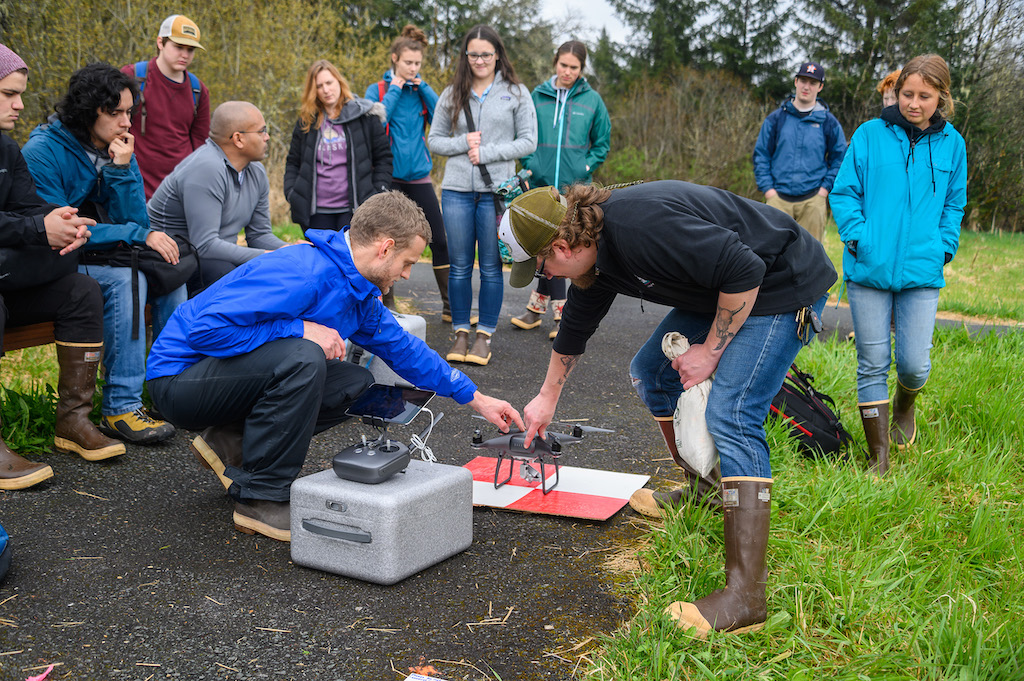UAS Students Learn to Use Drones for Environmental Research
The class was funded through AK CASC’s Suicide Basin outburst flood project and offered through UAS
Juneau, Alaska
Date of Press Release: June 6, 2019

Dr. Christian Kienholz, UAS Research Assistant Professor of Environmental Science and Dr. Gabriel Wolken from the Alaska Climate Adaptation Science Center (AK CASC) recently taught the class “Using Drones for Environmental Monitoring” to students at the University of Alaska (UAS). Dr. Eran Hood, a Professor of Environmental Science & Geography at the university and the UAS liaison with AK CASC, helped organize the class. In the week-long course, the students planned and conducted several drone campaigns for aerial mapping. The main class project focused on the rapidly evolving fluvial erosion of the Mendenhall River above Juneau’s Brotherhood Bridge. Students were tasked to use drone-derived maps to determine recent and potential future rates of erosion in the area.
The class was funded through AK CASC’s Suicide Basin outburst flood project and offered through UAS. Students planned and conducted several drone campaigns, which required learning how to optimize camera and drone settings for the project. Students were taught a technique known as Structure-From-Motion Photogrammetry, which was then applied to model surface topography from photos captured during drone flights. They were also taught how to use high accuracy GPS equipment to survey ground control points needed to improve the accuracy of drone-derived surface models.
“It was rewarding to teach students a range of new skills and to let them apply these skills to real-world problems. I think the course gave students a taste of the work conducted in an environmental consulting firm,” said Kienholz. He emphasized how he appreciated to teach the field component of the class right in the backyard of the university, using a local problem for the student project. Dr. Kienholz’ appointment as a Research Professor at UAS is through the Alaska Coastal Rainforest Center (ACRC), a collaborative organization led by UAS that links the University of Alaska system with state, federal, & local agencies and non-governmental organizations.
UAS works regularly to share research with several agencies in Juneau, including the City and Borough of Juneau (CBJ), the National Oceanic and Atmospheric Administration (NOAA), and the United States Geological Survey (USGS). CBJ Emergency Programs Manager Tom Mattice, who regularly works with Kienholz and Hood remarked, “CBJ is grateful for the university's research and use of cutting edge tools like drones, helping the city manage issues like the Suicide Basin glacier lake outburst flood and using tree core data to help prepare for avalanches.”
UAS supports a wide array of collaborative research activities with various organizations. These include the Alaska Coastal Rainforest Center, the Alaska Experimental Program to Stimulate Competitive Research (EPSCoR), the Alaska Climate Science Center, and SEALAB -- The UAS Spatial Ecosystem Analysis Lab, to name a few. Learn more about environmental science studies at UAS by visiting our website or by speaking to an advisor at 907-796-6100.